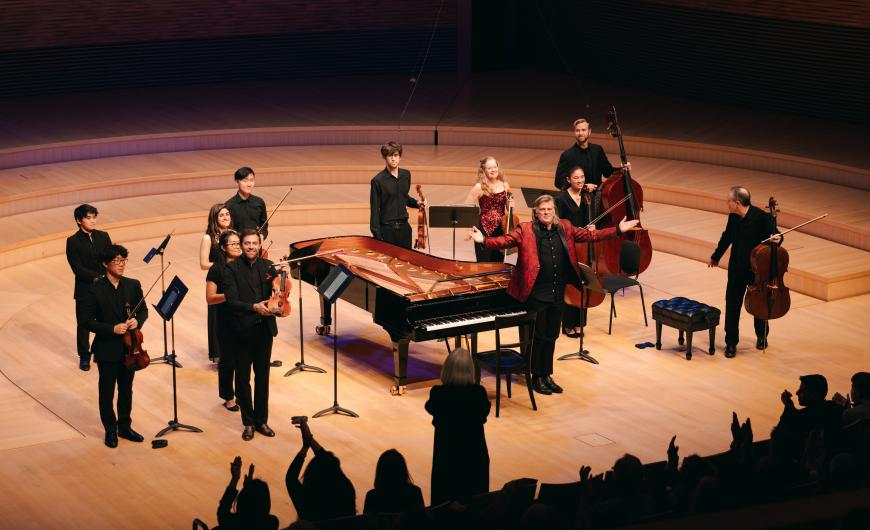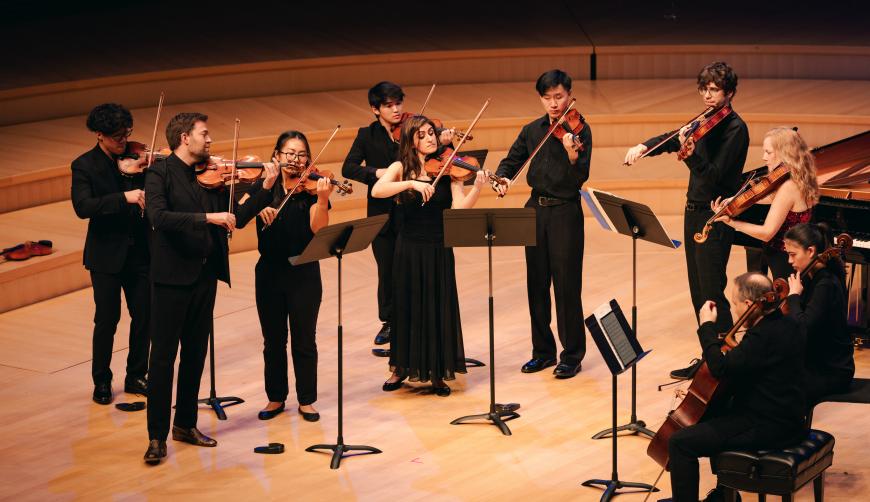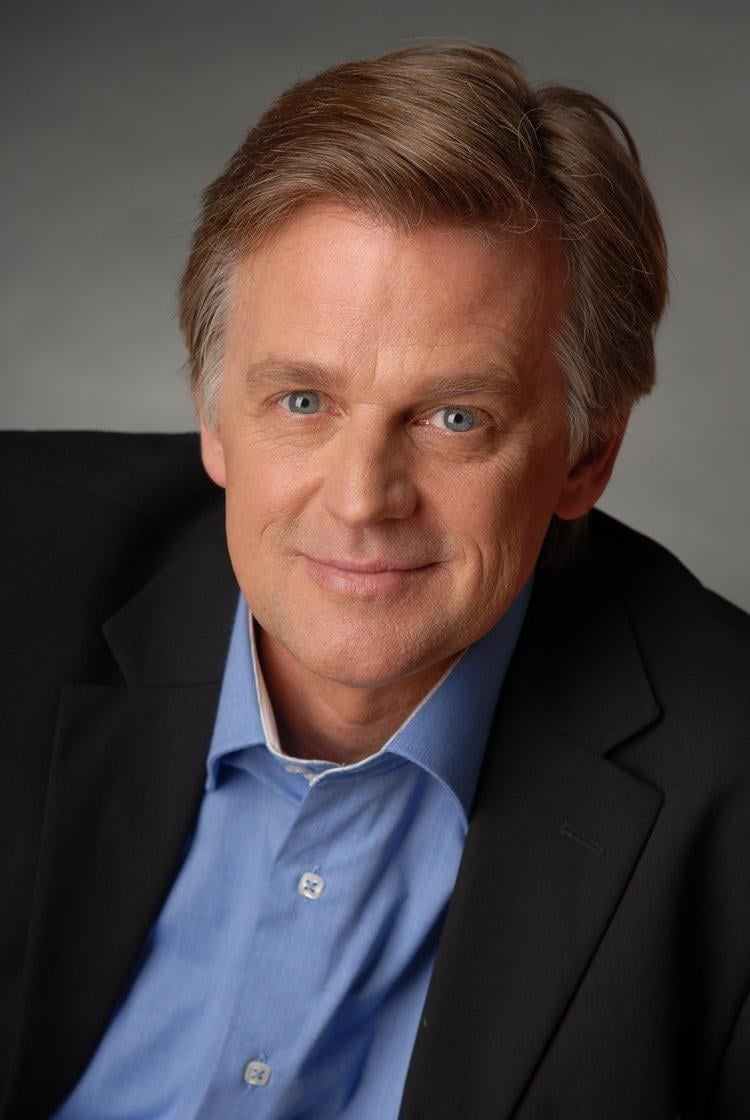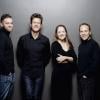
As the resident chamber ensemble at Stanford University, the St. Lawrence String Quartet has long given a public concert each term under the title “Sundays With the St. Lawrence.” These concerts have had to become somewhat improvisational in personnel since the much-lamented death of the group’s first violinist, Geoff Nuttall, in October 2022.
The first half of the most recent offering at Bing Concert Hall was billed as a performance by the Stanford Chamber Strings. This is normally a student ensemble, but on Sunday, Jan. 21, in addition to seven students, the three St. Lawrence players — violinist Owen Dalby, violist Lesley Robertson, and cellist Christopher Costanza — took the stage as section leaders, with Daniel Smith of the San Francisco Symphony joining as the sole double bassist.
Students or otherwise, these players certainly gave full-bodied performances of their repertoire, which consisted of Osvaldo Golijov’s Tenebrae and J.S. Bach’s Keyboard Concerto in D Minor, BWV 1052, both under the subdued direction of Dalby as concertmaster.

Tenebrae was originally composed for string quartet. It was arranged for string orchestra by the Boston-based chamber orchestra A Far Cry, a larger group than the 11-person ensemble at Bing. Golijov writes that he aimed to compose a piece with a “beautiful” surface but which would reveal that “beneath that surface, the music is full of pain.” I think most listeners hear the surface — the work is often praised for its beauty — and the smoother sound of an ensemble larger than a quartet seems to increase that effect.
Still, the imagery is mixed. Underlying the melodic fragments, some of which Golijov lifted from François Couperin, are pulsating sounds originating in the violas and passed around all the parts. On Sunday, some of these pulsations sounded like Antonio Vivaldi’s Baroque concertos, some like Béla Bartók’s modernism. The performance lasted about 12 minutes, which marks a very fast pace for this quiet, hesitant, and contemplative music.

Stephen Prutsman joined the strings as soloist in the concerto. Bach wrote it for the harpsichord, but Prutsman played it on a modern Steinway piano, which was nonetheless positioned onstage in customary harpsichord fashion: in the middle of the ensemble, with the lid removed and the performer facing away from the audience.
The use of a piano added immeasurably to the impact of the concerto — and not just in greater heft. Prutsman exploited the piano’s ability to carry and hold notes in order to maintain a continuity of line, particularly in the Adagio movement. In the lively faster movements, he projected energy and put an almost comic emphasis on the bass notes. The departure from harpsichord style could not have been greater, and perhaps Bach would have liked it — after all, scholars have speculated that the piece may have been based on a lost original for organ or violin.
After intermission, Prutsman and the three St. Lawrence players reappeared for a solid and outgoing performance of Robert Schuman’s Piano Quartet in E-flat Major, Op. 47. This was reminiscent of many a past St. Lawrence performance that might have featured Prutsman in a piano quintet of Schumann or Antonín Dvořák.
It’s lucky that Schumann also wrote such a fine quartet. The Scherzo was particularly fast and light, and the Andante cantabile was notable for the lengthy spinning of the main theme in the strings, especially the lonesome beauty in Robertson’s viola. The coda of that latter movement was memorable for the low growl of B-flats in octaves from Costanza’s cello, accomplished after he tuned his C string down a whole step, per the score, to catch that lowest note.
These new configurations of the St. Lawrence players may be counted as successes, with more performances to come from this group that’s carrying on as a chamber collective.




